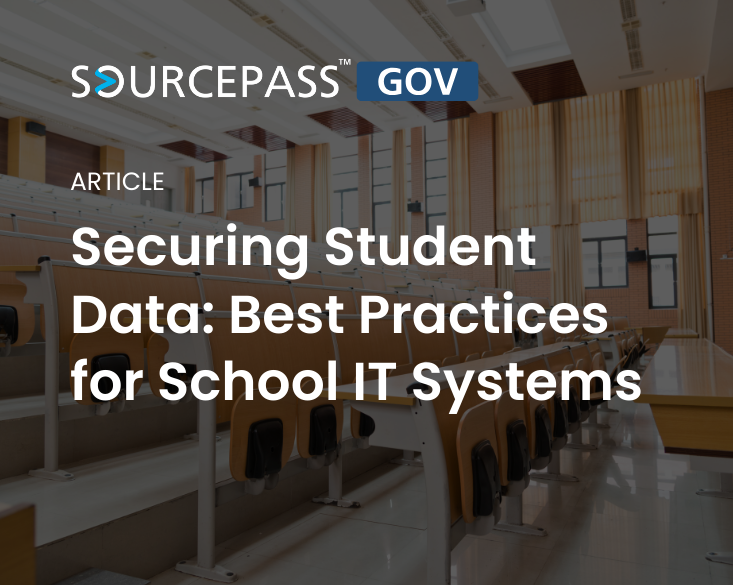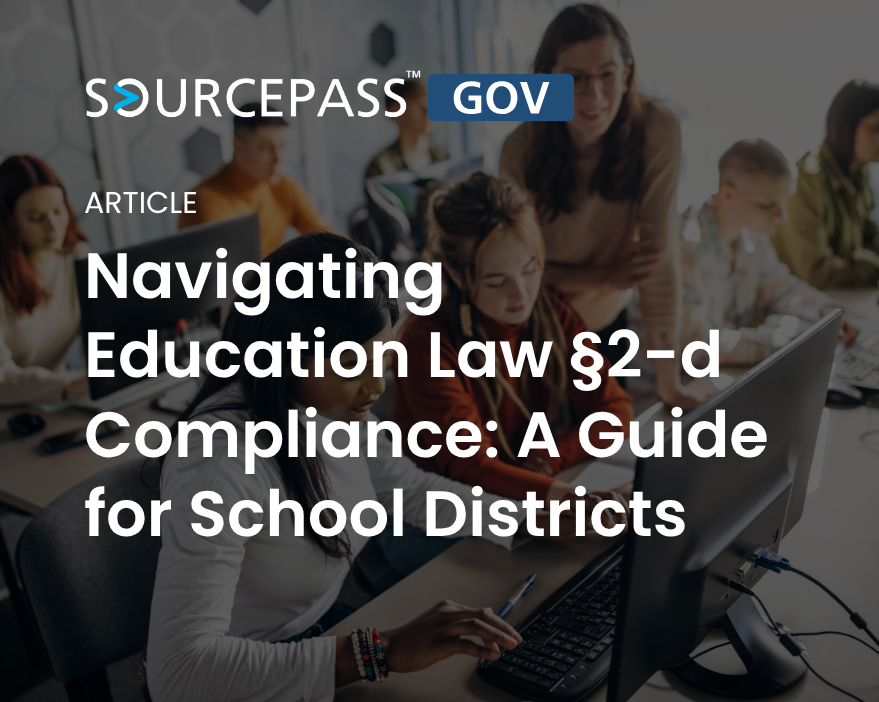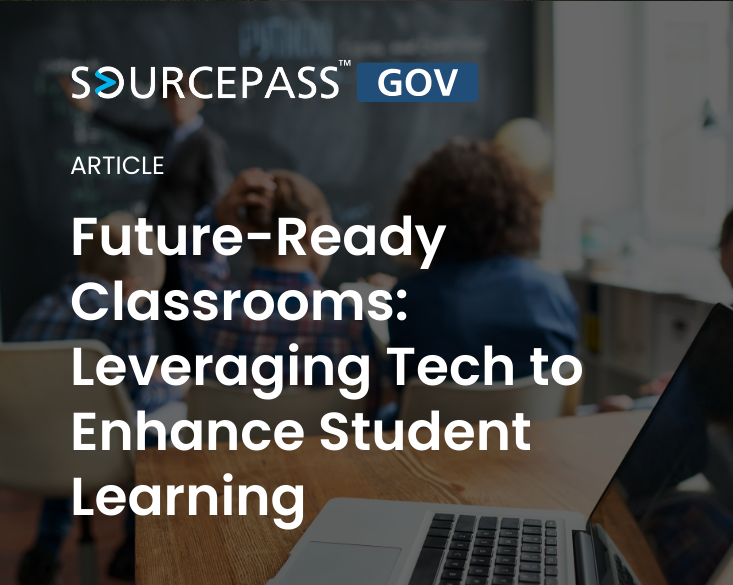1 min read
AI for the Public Sector | Sourcepass GOV AI Trainings
Artificial Intelligence (AI) is transforming how public sector organizations operate, from budgeting and compliance to citizen engagement. In our...
4 min read
Alex Davis : Feb 6, 2025 12:33:35 PM

In the age of hybrid and virtual learning, schools have become increasingly reliant on technology to enhance learning, improve administrative processes, and connect with students and families.
With the growing use of educational technology comes an equally important responsibility: securing student data. Protecting sensitive information is not just a matter of privacy; it's essential for maintaining trust and ensuring compliance with laws and regulations, such as FERPA (Family Educational Rights and Privacy Act) and GDPR (General Data Protection Regulation).
As schools collect and store vast amounts of data on students—ranging from academic records to personal information—IT systems must be fortified against potential threats.
Let's take a look at nine best practices that schools can implement to secure student data and ensure a safe digital learning environment.
Access control is the first line of defense against unauthorized access to student data. Schools should implement strict user authentication procedures to ensure that only authorized personnel can access sensitive data.
This includes setting up multi-factor authentication (MFA) for all accounts that access student records, particularly for staff members who handle or store data.
Additionally, schools should use role-based access control (RBAC) to limit access based on the user’s role within the organization.
For example, teachers should only have access to the data of their students, while administrators may require access to a wider array of records. By ensuring that access is tailored to the specific needs of each user, schools can minimize the risk of data breaches.
Encryption is a critical security measure that ensures data remains protected both while it’s stored and during transmission. Student data, such as personal identifiers, grades, and health information, should be encrypted when stored on school systems (data at rest) and when sent over networks (data in transit).
For data in transit, schools should utilize secure communication protocols such as HTTPS and TLS (Transport Layer Security) to protect information as it moves between devices, servers, and cloud-based platforms. Encryption of data at rest ensures that even if unauthorized access occurs, the data remains unreadable without the appropriate decryption key.
Cybercriminals often exploit vulnerabilities in outdated software to gain unauthorized access to systems. To prevent this, schools must regularly update and patch software, operating systems, and applications. This includes both desktop software and any cloud-based platforms that house student data.
Maintaining up-to-date software ensures that security flaws are addressed promptly and reduces the chances of cyberattacks, such as ransomware or malware infections. Implementing automated patch management systems can help ensure that updates are consistently applied without requiring manual intervention.
Security audits and vulnerability assessments help identify potential weaknesses in the school’s IT infrastructure. By conducting regular audits, schools can assess how well their current security measures are functioning, identify areas of improvement, and ensure compliance with relevant regulations.
Penetration testing—simulating a cyberattack to identify vulnerabilities—can also be a useful practice to identify areas where additional security measures are needed. Regular audits ensure that security protocols remain effective as new threats emerge.
.png?width=2250&height=1250&name=Sourcepass%20Featured%20Blogs%20(11).png)
Teachers, administrators, and other staff members are often the first line of defense against cyberattacks. It’s essential that they are trained in cybersecurity best practices and aware of the latest threats.
Training should cover topics such as recognizing phishing emails, creating strong passwords, and safeguarding personal devices. Schools should also establish clear protocols for reporting potential security incidents or breaches so that swift action can be taken.
Additionally, ongoing training ensures that staff members remain up-to-date on evolving threats and compliance requirements, helping to maintain a culture of security within the school community.
Data backups are essential in the event of a cyberattack or system failure. Schools should implement a robust data backup strategy that includes regular, encrypted backups of critical student data. These backups should be stored in a secure off-site location or in the cloud to protect against data loss in the event of a disaster or breach.
It’s important to test backup systems periodically to ensure that data can be restored quickly and accurately. This ensures that schools can minimize downtime and avoid the loss of valuable student records in the event of a security incident.
Many schools use cloud-based platforms for storing and managing student data due to their convenience and scalability. However, choosing the right cloud service provider is crucial to ensuring data security.
When selecting a cloud service, schools should carefully evaluate the provider’s security protocols and ensure that they comply with relevant laws and regulations, such as FERPA and GDPR. The provider should offer encryption, secure authentication, and access controls to safeguard student data.
It’s also essential to have a clear data protection agreement in place with the cloud service provider that outlines their responsibilities for data security and incident response.
Schools must ensure that their IT systems and practices comply with data privacy regulations such as FERPA (in the U.S.) and GDPR (in Europe). These regulations set strict guidelines on how student data should be handled, shared, and stored.
Schools should maintain clear policies that outline how student data will be used, who can access it, and how long it will be stored. Additionally, consent from parents or guardians may be required for certain types of data collection, such as health or biometric data.
Compliance not only helps protect student privacy but also reduces the risk of legal repercussions and fines.
Despite best efforts, no system is entirely immune to cyber threats. Schools should have an incident response plan (IRP) in place to address any potential data breaches or security incidents swiftly.
The IRP should include clear steps for identifying, containing, and mitigating the effects of a breach. It should also outline communication protocols to notify affected students, parents, and regulatory authorities if necessary. Regularly testing and updating the IRP ensures that it remains effective when an incident occurs.
Securing student data is a vital responsibility that schools cannot afford to overlook. By implementing these best practices—strong access controls, encryption, regular software updates, staff training, secure cloud services, and more—schools can create a safer environment for their students and ensure that sensitive information remains protected.
As education continues to embrace digital tools and platforms, a proactive approach to data security will help ensure that schools can leverage technology to enhance learning while safeguarding the privacy and safety of their students.
.png)
1 min read
Artificial Intelligence (AI) is transforming how public sector organizations operate, from budgeting and compliance to citizen engagement. In our...

3 min read
More than halfway through 2025, state Chief Information Officers (CIOs) continue to navigate a dynamic landscape of technological advancements and...

2 min read
Protecting student data is a top priority for school districts. New York's Education Law §2-d, enacted during the 2014-2015 fiscal year, sets forth...

In 2025, higher education institutions face the dual challenge of providing cutting-edge technology solutions while maintaining robust, secure IT...

As technology continues to evolve, so too must the way we approach education. In today’s world, integrating technology into the classroom isn’t just...

The shift to hybrid learning models—blending in-person and online education—has become a permanent fixture in many educational institutions.